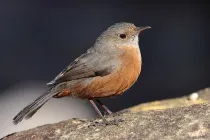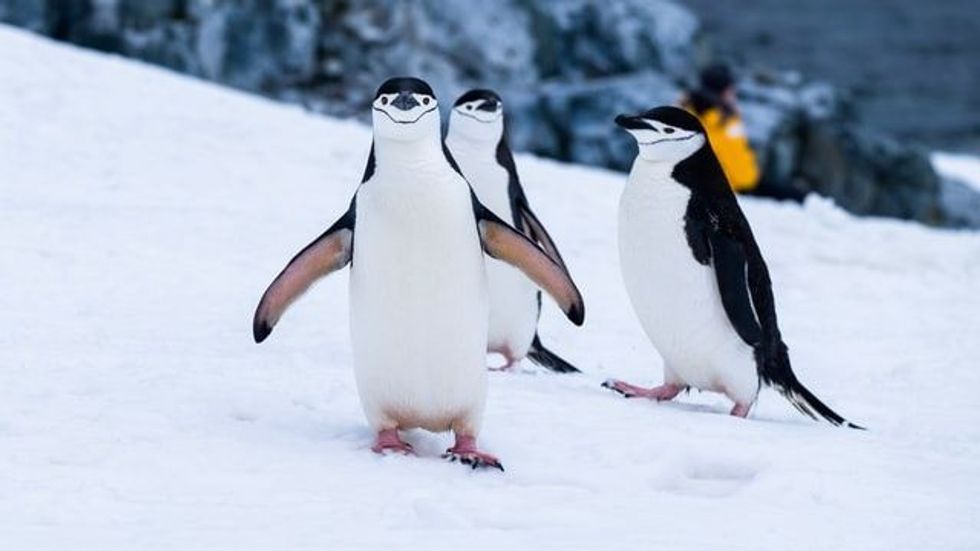Do you want to learn more about the amazing pilotbird? This bird of the order Passeriformes is found only in Australia, and it is known for its impressive flying abilities.
In this article, we will discuss interesting facts about the large pilotbird. We will also provide some fun activities that kids can do to learn more about this fascinating creature!
Pilotbird (Pycnoptilus floccosus) of the Acanthizidae family and genus pycnoptilus. This family has small-medium birds and their length varies from 3.14-7.5 in (8-19 cm). Birds in this family have a short tail, long legs, a slender bill, and short round wings.
Pilotbird Interesting Facts
What type of animal is a pilotbird?
Pilotbird (Pycnoptilus floccosus) is of the family Acanthizidae, order Passeriformes and phylum Chordata. This large bird species are terrestrial and stay close to the ground. There are two subspecies of this bird.
Pycnoptilus floccosus floccosus, the nominate subspecies, and Pycnoptilus floccosus sandfordi. This species uses strong legs to run when threatened. This bird is known for its impressive flying abilities, and it is the only species in its genus.
What class of animal does a pilotbird belong to?
Pilotbird (Pycnoptilus floccosus) belongs to the class of birds or Aves in the animal kingdom.
How many pilotbirds are there in the world?
The exact population count of pilotbird (Pycnoptilus floccosus) is not available. However, the current distribution number of pilotbird is facing a decline, as of October 2016.
Where does a pilotbird live?
Pilotbird lives in New South Wales between Blue Mountains National Park and Wollemi National Park across the Dandenong Ranges located close to Melbourne, Victoria.
What is a pilotbird's habitat?
Pycnoptilus floccosus (Gould, 1851) is a terrestrial species of bird and its habitat is temperate wet sclerophyll forest and rainforest with dense undergrowth. The pilotbird habitat also includes open woodlands and forests.
This bird prefers to stay near water, and it often hunts for food near the edges of streams or rivers. The nominate subspecies occupy alpine areas and Pycnoptilus floccosus sandfordi occupies lowlands forests.
Who do pilotbirds live with?
Pycnoptilus floccosus (Gould, 1851) typically lives with a monogamous pair. However, during the breeding season, this species will form small flocks of up to six birds.
How long does a pilotbird live?
This bird species can live up to 15 years in the wild, but it typically only lives for about 12 years.
How do they reproduce?
The breeding season of these birds occurs between August and December. They build a globular nest that has side-entrance and is hidden in the debris they accumulated on the forest floor. The females usually build the nest. The nest construction is untidy with rootlets, dead leaves, fern, and bark.
Females lay around two eggs that are 1.06x0.79 sq. in (27x20 sq. mm).
The pilotbird egg can be anywhere between grey-green and purple-brown. Females will incubate for about 20-22 days. The nestling periods last up to 14-17 days and males will usually help care for the nestlings or feed their partner. Sometimes, the fan-tailed cuckoos or Cacomantis flabelliformis act as parasites in pilotbird nests.
What is their conservation status?
The conservation status of Pilotbird as per the assessment done in October 2016, is listed as Least Concern.
Pilotbird Fun Facts
What do pilotbirds look like?
Pycnoptilus floccosus (Gould, 1851), or pilotbird appearance is large and plump. The under part plumage is reddish-brown with scalloping on the center of the belly and chest mottled dull white. The upper parts of Pycnoptilus floccosus (Gould, 1851) are chocolate brown and the short bill is finely pointed.
The bill is also a lot shorter compared to the head. It has a semi-erect and broad tail that flicks up and down while feeding. Pilotbird also has strong legs.
How cute are they?
Pilotbirds are considered to be cute bird species.
How do they communicate?
This bird species communicate with body language, call, and vibrations. They also use body language to show their feelings towards one another.
For example, if two pilotbirds want to mate with each other, they will stand side-by-side and bow their heads down. If a pilotbird is angry at another bird, it might puff out its feathers or flap its wings in order to look bigger than the other bird.
Pilotbird makes a variety of different sounds, including chirping, whistling, and twittering. This bird uses its sounds to communicate with each other, and it can even mimic the noises that other animals make. The pilotbird male has a far-crying call that sounds like 'wit-wit-weet-WHEER' and to this the pilotbird female replies with a soft 'wit-a-wit-ee'.
How big is a pilotbird?
The length range of the pilotbird is 7.1 in (18 cm). It is almost twice the length of a shy heath wren (Hylacola cauta). The pilotbird wingspan is not known.
How fast can a pilotbird fly?
The pilotbird flight speed is not exactly known. A pilotbird is an excellent flier.
How much does a pilotbird weigh?
The weight of these birds is 0.05 lb (27 g).
What are the male and female names of the species?
There are no specific names given to female and male pilotbird.
What would you call a baby pilotbird?
The pilotbird baby is called a chick.
What do they eat?
The pilotbird diet is carnivorous. A pilotbird eats mostly insects, but it will also eat small mammals, reptiles, and birds. This bird will sometimes hunt for food on the ground, but it prefers to catch its prey in mid-air. The bird forages using its strong legs.
A pilotbird has very good eyesight, and it can spot insects from far away. This bird also uses its strong sense of smell to search for food.
A pilotbird can detect the odor of an insect even if there is no wind blowing towards it! A pilotbird likes to eat worms that live underground, so this bird will often dig up dirt with its beak in order to expose these tasty treats.
Are they dangerous?
These birds of the genus pycnoptilus are not usually considered as they are known to run if they face any kind of threat or a predator.
Would they make a good pet?
It may do well as a pet with proper care. A pilotbird needs plenty of space to fly around and exercise.
It also requires a special diet that consists of fruits, vegetables, meat, and insects. You should create an environment for your pet bird that mimics its natural habitat as much as possible by providing it with branches to perch on, grassy areas to walk through, or dig in the dirt.
Did You Know...
John Gould, an English ornithologist first described pilotbird in 1851. Pycnoptilus, the generic name was derived from the Ancient Greek term, 'pyknos' meaning 'thick' and 'ptilon' meaning 'feather.'
The specific name, floccosus is a Late Latin word for 'flocked with wool'.
Along with the genus pycnoptilus, there are 14 more genera within this family.
Are pilotbirds endangered?
No, pilotbirds are not currently endangered. However, they are under threat due to many environmental changes and their population is decreasing.
How did pilotbirds get their name?
A pilotbird got its name from the way it flies in front of other birds, leading them to insects and food. It is very good at finding tasty treats for itself and others.
*We've been unable to source an image of a pilotbird and have used an image of a rockwarbler instead. If you are able to provide us with a royalty-free image of pilotbird, we would be happy to credit you. Please contact us at hello@kidadl.com.
**We've been unable to source an image of a pilotbird and have used an image of a yellow thornbill instead. If you are able to provide us with a royalty-free image of Pilotbird, we would be happy to credit you. Please contact us at hello@kidadl.com.









